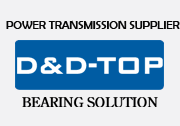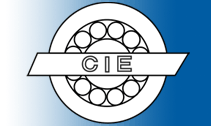| / We will do attentively.. | Collection / Supposes / E-mail / Site map |

|

| Industry News | |||||||
|
| Current Location: Home >> Products >>Auto Steering Gears >>Recirculating Ball Type Steering Gears |
| Products |
| Recirculating ballnut and worm assemblies steering gears |
|
|
|
Relative Key Word: Recirculating ball and nut steering gear; Recirculating ball-rack and sector steering gear; |
Introduction of Recirculating Ball Type Steering Gears |
| Recirculating-ball steering is used on many trucks and SUVs today. The linkage that turns the wheels is slightly different than on a rack-and-pinion system. |
 |
The recirculating-ball steering gear contains a worm gear. You can image the gear in two parts. The first part is a block of metal with a threaded hole in it. This block has gear teeth cut into the outside of it, which engage a gear that moves the pitman arm shaft (see diagram above). The steering wheel connects to a threaded rod, similar to a bolt, that sticks into the hole in the block. When the steering wheel turns, it turns the bolt. Instead of twisting further into the block the way a regular bolt would, this bolt is held fixed so that when it spins, it moves the block, which moves the gear that turns the wheels. |
 |
 |
| Instead of the bolt directly engaging the threads in the block, all of the threads are filled with ball bearings that recirculate through the gear as it turns. The balls actually serve two purposes: First, they reduce friction and wear in the gear; second, they reduce slop in the gear. Slop would be felt when you change the direction of the steering wheel -- without the balls in the steering gear, the teeth would come out of contact with each other for a moment, making the steering wheel feel loose. |
| Power steering in a recirculating-ball system works similarly to a rack-and-pinion system. Assist is provided by supplying higher-pressure fluid to one side of the block. |
| Now let's take a look at the other components that make up a power-steering system |
Power Steering |
| There are a couple of key components in power steering in addition to the rack-and-pinion or recirculating-ball mechanism. |
 |
| Pump The hydraulic power for the steering is provided by a rotary-vane pump (see diagram below). This pump is driven by the car's engine via a belt and pulley. It contains a set of retractable vanes that spin inside an oval chamber. |
 |
As the vanes spin, they pull hydraulic fluid from the return line at low pressure and force it into the outlet at high pressure. The amount of flow provided by the pump depends on the car's engine speed. The pump must be designed to provide adequate flow when the engine is idling. As a result, the pump moves much more fluid than necessary when the engine is running at faster speeds. The pump contains a pressure-relief valve to make sure that the pressure does not get too high, especially at high engine speeds when so much fluid is being pumped. |
Rotary Valve |
 |
The input from the steering shaft forms the inner part of a spool-valve assembly. It also connects to the top end of the torsion bar. The bottom of the torsion bar connects to the outer part of the spool valve. The torsion bar also turns the output of the steering gear, connecting to either the pinion gear or the worm gear depending on which type of steering the car has. As the bar twists, it rotates the inside of the spool valve relative to the outside. Since the inner part of the spool valve is also connected to the steering shaft (and therefore to the steering wheel), the amount of rotation between the inner and outer parts of the spool valve depends on how much torque the driver applies to the steering wheel. |
When the steering wheel is not being turned, both hydraulic lines provide the same amount of pressure to the steering gear. But if the spool valve is turned one way or the other, ports open up to provide high-pressure fluid to the appropriate line. |
MANUAL STEERING GEARS |
POWER STEERING GEARS ACURA TRUCK AMC BUICK CADILLAC CHEVROLET CHEVROLET/GMC TRUCK CHRYSLER DODGE TRUCK FORD TRUCK HONDA TRUCK INTERNATIONAL ISUZU TRUCK JEEP TRUCK LINCOLNTRUCK MAZDA TRUCK MERCURY MITSUBISHI TRUCK NISSANTRUCK OLDSMOBILETRUCK PLYMOUTH PONTIAC TOYOTA TRUCK |
| If there is any question. Welcome to contact us in details. Thanks. |
| Recirculating Ball Type Steering Gears | |||||||
|
| Other related category: | Auto Bearings, Industry Bearing, Power Transmission Parts |
| Relative Product : | Worm And Level Steering Gears , Rack And Pinion Type Steering Gears , Recirculating Ball Type Steering Gears |
| Workshop | Products | Contact |
| Copyright © NINGBO CIE INDUSTRY AND TRADE CO.,LTD. All Rights Reserved. Design By HiSupplier Online Inc. |
